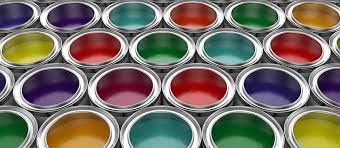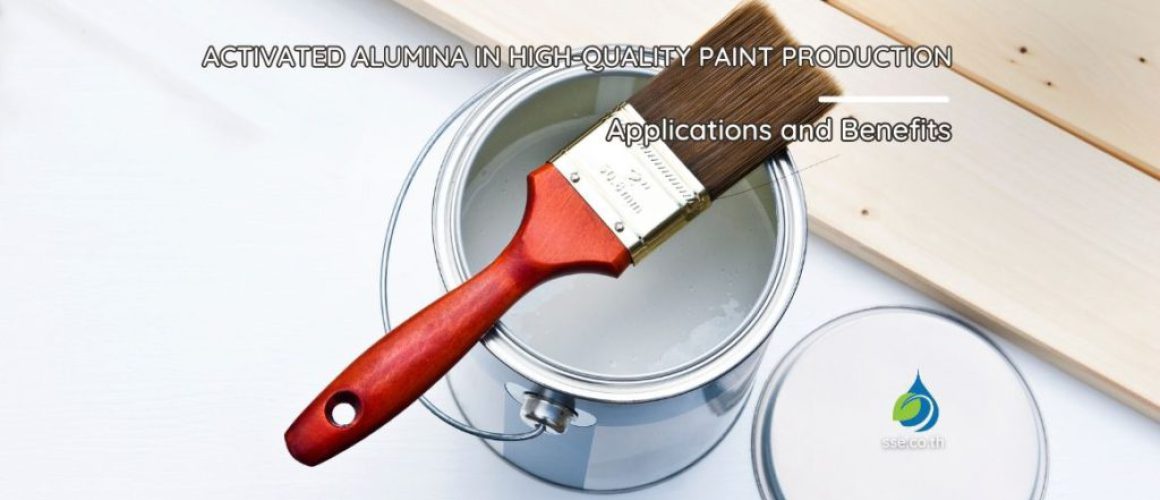The Critical Role of Activated Alumina in Paint Production


| Key Aspect | Details |
|---|---|
| Primary Role | Moisture control and adsorbent in paint manufacturing |
| Benefits for Paint Quality | Enhances stability, prevents clumping, ensures consistent viscosity and application properties |
| Moisture Control | Removes excess moisture, critical for maintaining paint integrity and preventing degradation |
| Production Efficiency | Reduces issues related to excess humidity, minimizing production delays and product waste |
| Chemical Stability | Provides a stable medium that withstands high temperatures and maintains paint quality |
| Environmental Impact | Helps in achieving better product longevity, reducing the frequency of repainting and resource use |
Table of Contents
Activated Alumina in Paint Production
Activated alumina, though perhaps not commonly known, plays a pivotal role in creating the high-quality paints that we use in our day-to-day lives. The role of this fascinating substance in the paint industry is more critical than many realize. This article aims to shed light on the significance of activated alumina in the production of high-quality paints, its unique properties, and the impact it has on the final product.
Understanding Activated Alumina
A. What is Activated Alumina?
Before delving into its role in paint production, it’s crucial to understand what activated alumina is and its unique properties. Activated alumina is a form of aluminum oxide (Al2O3), often used as a desiccant, adsorbent, or catalyst in various industries. It’s highly porous and exhibits a tremendous surface area, which makes it extremely efficient at absorbing both gases and liquids.
B. How is Activated Alumina Produced?
The production process of activated alumina is fascinating and heavily influences its end-use applications. Activated alumina is made by treating aluminum hydroxide with heat, a process known as dehydroxylation. This heat treatment leads to a highly porous material, which is then used in a wide range of applications due to its excellent adsorption properties.


Activated Alumina and Paint Production
A. Why Activated Alumina is Used in Paint Production
Activated alumina has proven to be an essential component in paint production due to its unique characteristics. Its primary role involves adsorbing excess moisture and unwanted gases during the manufacturing process. This is essential as excess moisture can lead to the paint’s premature failure, affecting its longevity and quality.
B. Role of Activated Alumina in Moisture Control
Controlling moisture is a critical factor in paint production, and this is where activated alumina comes into play. Its excellent desiccant properties help maintain an optimal level of humidity during the manufacturing process. By effectively managing moisture content, activated alumina ensures that the paint does not crack, peel, or discolor over time.
C. Activated Alumina as a Catalyst in Paint Production
Beyond moisture control, activated alumina also serves as a crucial catalyst in the paint production process. It aids in speeding up chemical reactions during the formulation of paint, thus saving time and resources. This catalytic action is particularly critical in the production of certain types of high-quality paints, such as alkyd resins or polyesters.
The Impact of Activated Alumina on Paint Quality
A. How Activated Alumina Improves Paint Quality
The use of activated alumina directly correlates with the quality of the paint produced, but how exactly does it do so? Primarily, activated alumina aids in creating a more consistent and stable paint product. By controlling moisture and acting as a catalyst, it ensures that the paint’s physical and chemical properties remain optimal, resulting in a high-quality finish that lasts longer.
B. Case Studies: Paint Quality with and without Activated Alumina
To better understand the impact of activated alumina on paint quality, let’s explore a few case studies comparing paints produced with and without it. These case studies clearly demonstrate the tangible benefits of using activated alumina in paint production, from improving the paint’s shelf life to enhancing its overall performance.
- Case Study 1: High-Gloss Acrylic Paints
A high-gloss acrylic paint manufacturer decided to include activated alumina in their formulation. They found that the paint’s viscosity and stability significantly improved. The paint’s shelf-life was prolonged, and it retained its color vibrancy over time. In comparison, the same paint produced without activated alumina had a shorter shelf-life and the colors tended to fade faster. - Case Study 2: Industrial Epoxy Coatings
An industrial epoxy coating producer incorporated activated alumina into their product mix. The result was a more robust and durable coating that resisted moisture penetration, thereby reducing the risk of corrosion in the metal substrates it was applied to. Without activated alumina, the coating was less resistant to moisture and more prone to corrosion over time. - Case Study 3: Automotive Paints
A leading automotive paint company used activated alumina in their paint formulation. The outcome was a smoother, glossier finish that was more resistant to chipping and weathering. Comparatively, when activated alumina was not used, the paint finish was duller and more susceptible to chipping and weathering.
The consistent use of activated alumina in paint production can drastically improve the product’s overall performance and durability.
Future Trends: Activated Alumina in Paint Production
A. Innovative Uses of Activated Alumina in Paint Formulations
As the paint industry continues to evolve, so do the uses of activated alumina. Today, researchers and paint manufacturers are exploring innovative ways to maximize the benefits of activated alumina in paint formulations. This could mean using it to create paints that are more resistant to harsh environmental conditions or exploring its potential in creating more eco-friendly paint options.
B. The Growing Demand for High-Quality Paints and the Role of Activated Alumina
With the increasing demand for high-quality paints for various applications, from domestic use to industrial applications, the role of activated alumina is set to become even more critical. Its ability to enhance paint quality and longevity makes it an invaluable asset in meeting this growing demand.
Frequently Asked Questions
What is activated alumina and how is it used in paint production?
Activated alumina is a highly porous form of aluminum oxide. In paint production, it’s primarily used as a desiccant to remove moisture and as a catalyst in various chemical reactions involved in paint manufacturing.
How does activated alumina improve the quality of paint?
Activated alumina can improve paint quality in various ways. Its moisture-absorbing properties can enhance paint’s longevity and prevent deterioration. Moreover, it can serve as a catalyst, enhancing the efficiency of chemical reactions in the paint production process, leading to a smoother and more uniform paint product.
What types of paint use activated alumina?
Activated alumina can be used in various types of paint, including acrylic, latex, epoxy, and oil-based paints. It’s particularly beneficial in high-gloss and industrial-grade paints due to its capacity to enhance durability and longevity.
Is activated alumina safe to use in paint production?
Yes, activated alumina is generally safe for use in paint production. It’s non-toxic and doesn’t react with paint chemicals. However, like with any industrial process, proper handling and safety measures should be adhered to when using it.
Does activated alumina affect the color or texture of the paint?
Activated alumina doesn’t directly affect the color or texture of the paint. Its primary role is to enhance the paint’s chemical stability and longevity. However, by doing so, it can indirectly help maintain the paint’s original color and texture over time.
Can activated alumina be used in other stages of paint application, like in primers or topcoats?
Yes, activated alumina can be used in various stages of paint application, including in primers and topcoats. Its moisture-absorbing properties can help ensure that these layers adhere properly and resist moisture damage.
Can activated alumina be reused or recycled in paint production?
While it’s theoretically possible to regenerate activated alumina by heating it to release absorbed moisture, this process can be energy-intensive. In practice, activated alumina used in paint production is typically not recycled due to the complexity of the regeneration process and potential for contamination.
Conclusion
A. The Essential Role of Activated Alumina
To sum up, activated alumina plays an integral role in the production of high-quality paint. Its unique properties, including moisture absorption and catalytic activity, have made it a key component in the paint industry. Without it, producing paints with the level of quality and durability we’ve come to expect would be significantly more challenging.
B. The Lasting Impact of Activated Alumina
The impact of activated alumina extends far beyond the paint production process. It affects everything from the lifespan of the paint to its performance under different conditions. As such, activated alumina will continue to be a vital ingredient in the production of high-quality paints, contributing to the creation of products that meet and exceed our expectations.
As the demand for superior paints grows, and the industry continues to evolve, activated alumina will undoubtedly remain an essential player. Its unique properties and versatility make it perfectly suited to meet the challenges of paint production, today and into the future.
To fully understand the versatility of activated alumina, we invite you to explore other applications of Activated Alumina in diverse industries. From gas purification and moisture control to catalytic processes, activated alumina plays a critical role in enhancing efficiency and ensuring quality across a range of industrial uses.
Activated Alumina in the Food an Beverage Industry
A Comprehensive Guide to Activated Alumina
https://www.royaltalens.com/en/inspiration/tips-techniques/production-process-paint/
ขอบคุณที่ใช้เวลาอ่านบทความของเราเกี่ยวกับการป้องกันความชื้น ทางเราหวังว่าท่านจะได้รับข้อมูลที่มีคุณค่าและเป็นประโยชน์ ทางเรายินดีให้บริการการปรึกษาฟรีเพื่อพูดคุยเกี่ยวกับความต้องการของท่านและให้คำแนะนำเกี่ยวกับวิธีการป้องกันความชื้นที่กำหนดเฉพาะสำหรับคุณ โปรดติดต่อเราที่ 0858124188 เพื่อนัดหมายการปรึกษาหรือเยี่ยมชมร้านค้าของเราเพื่อค้นหาผลิตภัณฑ์ที่ช่วยป้องกันสินค้าของคุณจากความเสียหายจากความชื้น ทางเราหวังว่าจะได้รับข่าวสารจากท่านเร็วๆนี้
